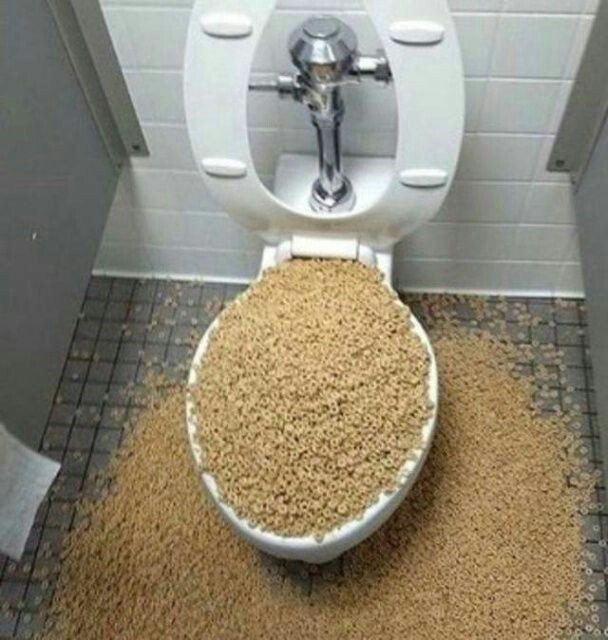Are You Allowed to Dispose of Food in the Toilet?
Are You Allowed to Dispose of Food in the Toilet?
Blog Article
The article on the next paragraphs on the subject of Is it safe to flush food (especially rice) down the toilet? is rather fascinating. Give it a go and draw your own ideas.

Intro
Many people are usually faced with the problem of what to do with food waste, especially when it concerns leftovers or scraps. One typical concern that arises is whether it's fine to purge food down the commode. In this post, we'll delve into the reasons that people may take into consideration flushing food, the consequences of doing so, and different methods for appropriate disposal.
Reasons why individuals might consider purging food
Lack of understanding
Some individuals might not recognize the prospective damage brought on by purging food down the toilet. They might erroneously believe that it's a safe method.
Comfort
Purging food down the toilet may feel like a quick and very easy solution to taking care of undesirable scraps, especially when there's no nearby garbage can offered.
Negligence
In some cases, people might simply choose to flush food out of sheer negligence, without taking into consideration the effects of their activities.
Repercussions of flushing food down the commode
Environmental impact
Food waste that winds up in waterways can contribute to contamination and harm aquatic ecological communities. Additionally, the water used to purge food can stress water sources.
Pipes issues
Flushing food can cause clogged pipelines and drains, triggering costly plumbing repairs and inconveniences.
Types of food that must not be flushed
Coarse foods
Foods with coarse appearances such as celery or corn husks can get tangled in pipelines and create clogs.
Starchy foods
Starchy foods like pasta and rice can absorb water and swell, causing obstructions in pipelines.
Oils and fats
Greasy foods like bacon or food preparation oils must never be purged down the toilet as they can solidify and trigger clogs.
Proper disposal methods for food waste
Utilizing a waste disposal unit
For homes equipped with garbage disposals, food scraps can be ground up and purged via the pipes system. Nonetheless, not all foods are suitable for disposal in this manner.
Recycling
Certain food packaging products can be recycled, minimizing waste and lessening ecological effect.
Composting
Composting is a green way to take care of food waste. Organic products can be composted and used to enrich soil for horticulture.
The significance of correct waste monitoring
Lowering environmental damage
Correct waste management techniques, such as composting and recycling, help lessen pollution and protect natural resources for future generations.
Securing pipes systems
By preventing the technique of flushing food down the bathroom, home owners can prevent pricey pipes repair work and keep the stability of their plumbing systems.
Conclusion
Finally, while it may be appealing to purge food down the toilet for convenience, it is essential to comprehend the possible effects of this activity. By taking on proper waste management practices and throwing away food waste properly, people can contribute to much healthier plumbing systems and a cleaner atmosphere for all.
FLUSH FOOD DOWN THE TOILET?
FLUSHING FOOD CAN CAUSE BLOCKED DRAINS IN YOUR HOME
All of the plumbing fixtures in your home are connected to the same sewer pipe outside of your home. This outdoor sewer pipe is responsible for transporting all the wastewater from your home to the Council sewer mains. Even small pieces of food that go down the kitchen sink can cause problems for your sewer. It should therefore be obvious that flushing larger bits of food, such as meat, risks a clog in either the toilet itself or the sewer pipes. Flushing greasy food is even more problematic because oil coagulates when it cools, coating the interior lining of your pipes.
THE TOILET IS NOT A BIN
Food isn’t the only thing that people shouldn’t be flushing down the toilet. People use the toilet to dispose of all kinds of things such as tampons, makeup wipes, dental floss, kitty litter and even underwear. Water goes to great lengths to educate residents about the high costs and stress placed on wastewater treatment systems simply from people flushing the wrong stuff down the toilet. It costs taxpayers millions of dollars each year, and homeowners thousands in blocked drain repairs.
FLUSHING FOOD IS A WASTE OF WATER
Flushing food is a waste of our most precious resource - water. In June this year Level 1 water restrictions were introduced to protect water supply from drought conditions. Much of New South Wales continues to be affected by prolonged drought with recent figures revealing up to 97 per cent of the state remains in drought. Depending on whether you have a single or dual flush toilet, every single flush uses between five and 11 litres of water. In the current climate this is a huge amount of water to be wasting on flushing food that should be placed in the bin (or better yet, the compost).
https://www.jabplumbingsolutions.com.au/blog/can-you-flush-food-down-the-toilet

I found that review on when looking around the search engines. In case you enjoyed our article please be sure to pass it around. Thanks for being here. Come back soon.
Click Here Report this page